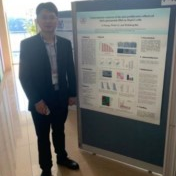Polysaccharide Gels and Beyond: From the Synthesis to Application
A special issue of Gels (ISSN 2310-2861). This special issue belongs to the section "Gel Processing and Engineering".
Deadline for manuscript submissions: closed (28 February 2024) | Viewed by 9706
Special Issue Editors
Interests: functional polymer; molecular imaging; nanotherapeutics; hydrogel
Special Issue Information
Dear Colleagues,
As a typical flexible material, polysaccharide gels have good viscoelasticity, porosity, transparency, and biocompatibility. Benefitting from their similar structure and performance to that of human soft tissues, polysaccharide gels have shown great scientific value and broad application prospects in tumor therapy, tissue engineering, biosensing, and other biomedical fields. In recent years, the development of polysaccharide gels in the fields of engineering, food, and cosmetics has also received extensive attention, such as flexible electronics, food additives, or skin care products. Considering the special application scenarios, different requirements in the aspect of mechanical properties, functional design, and biocompatibility are still a major challenge in material design.
This Special Issue focuses on emerging progress in polysaccharide gels, including natural polysaccharide gels and other polymer materials. Additionally, we welcome contributions regarding the mechanism study of polysaccharide material.
Dr. Hongwei Cheng
Prof. Dr. Weicheng Hu
Guest Editors
Manuscript Submission Information
Manuscripts should be submitted online at www.mdpi.com by registering and logging in to this website. Once you are registered, click here to go to the submission form. Manuscripts can be submitted until the deadline. All submissions that pass pre-check are peer-reviewed. Accepted papers will be published continuously in the journal (as soon as accepted) and will be listed together on the special issue website. Research articles, review articles as well as short communications are invited. For planned papers, a title and short abstract (about 100 words) can be sent to the Editorial Office for announcement on this website.
Submitted manuscripts should not have been published previously, nor be under consideration for publication elsewhere (except conference proceedings papers). All manuscripts are thoroughly refereed through a single-blind peer-review process. A guide for authors and other relevant information for submission of manuscripts is available on the Instructions for Authors page. Gels is an international peer-reviewed open access monthly journal published by MDPI.
Please visit the Instructions for Authors page before submitting a manuscript. The Article Processing Charge (APC) for publication in this open access journal is 2600 CHF (Swiss Francs). Submitted papers should be well formatted and use good English. Authors may use MDPI's English editing service prior to publication or during author revisions.
Keywords
- Polysaccharide
- Hydrogel
- Polymer
- Natural compounds
- Structure design
- Functionalization
- Cancer therapy
- Tissue engineering
- Biosensor
- Food additives
- Skin protection







